Related Research Articles

Egg decorating is the art or craft of decorating eggs. It has been a popular art form throughout history because of the attractive, smooth, oval shape of the egg, and the ancient associations with eggs as a religious and cultural symbol. Egg decorating has been associated with Easter in recent times, but was practiced independently by many ancient cultures.

Okir or okil is the term for rectilinear and curvilinear plant-based designs and folk motifs that can be usually found among the Moro and Lumad people of the Southern Philippines, as well as parts of Sabah. It is particularly associated with the artwork of the Maranao and Sama (Badjao) tribes, although it can also be found to a lesser extent among the Maguindanao, Iranun, Tausug, Yakan, and Lumad groups. The design elements vary among these ethnic groups, with the greatest refinement being found among the Maranao.
In politics, a figurehead is a person who de jure appears to hold an important and often supremely powerful title or office, yet de facto exercises little to no actual power. This usually means that they are head of state, but not head of government. The metaphor derives from the carved figurehead at the prow of a sailing ship.

The vinta is a traditional outrigger boat from the Philippine island of Mindanao. The boats are made by Sama-Bajau, Tausug and Yakan peoples living in the Sulu Archipelago, Zamboanga peninsula, and southern Mindanao. Vinta are characterized by their colorful rectangular lug sails (bukay) and bifurcated prows and sterns, which resemble the gaping mouth of a crocodile. Vinta are used as fishing vessels, cargo ships, and houseboats. Smaller undecorated versions of the vinta used for fishing are known as tondaan.

Carved stone balls are petrospheres dated from the late Neolithic, to possibly as late as the Iron Age, mainly found in Scotland, but also elsewhere in Britain and Ireland. They are usually round and rarely oval, and of fairly uniform size at around 2+3⁄4 inches or 7 cm across, with anything between 3 and 160 protruding knobs on the surface. They range from having no ornamentation to extensive and highly varied engraved patterns. A wide range of theories has been produced to explain their use or significance, with none gaining very wide acceptance.
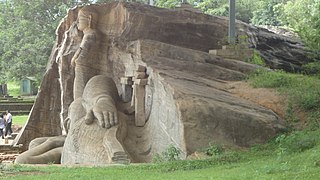
The Gal Vihara, and known originally as the Uttararama, is a rock temple of the Buddha situated in the ancient city Polonnaruwa, the capital of the ancient Kingdom of Polonnaruwa, now present-day Polonnaruwa, in North Central Province, Sri Lanka. It was fashioned in the 12th century by King Parakramabahu I. The central feature of the temple is four rock relief statues of the Buddha, which have been carved into the face of a large granite gneiss rock. The images consist of a large seated figure, another smaller seated figure inside an artificial cavern, a standing figure, and a reclining figure. These are considered to be some of the best examples of ancient Sinhalese sculpting and carving arts, and have made the Gal Vihara the most visited monument at Polonnaruwa.

MV Spirit of Chartwell is a hotel barge owned and operated by Portuguese holiday company Douro Azul for luxury cruises along the Douro river, Porto, Portugal.
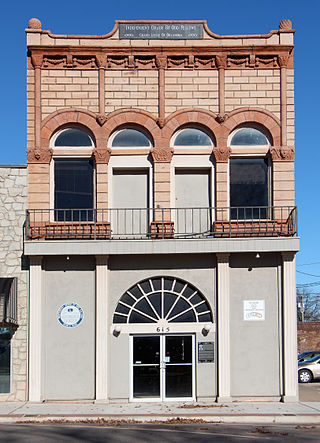
The Wolleson–Nicewander Building, also known as the Triton Insurance Company Building, was built in 1900, and is within the Perry Courthouse Square Historic District in Perry, Oklahoma. Its builder, T. E. Wollenson, was a sailor and merchant who had immigrated from Denmark, and settled in Perry. Wollenson bought a lot on the north side of what is now called Courthouse Square. He then built a two-story building, that soon housed the Nicewander Clothing store. Later occupants included a dry goods store, a tire and auto supply store, and an insurance company headquarters.
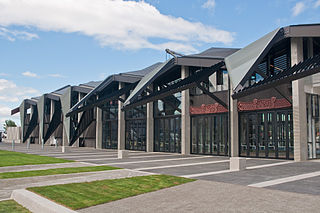
Te Raukura, otherwise known as Te Wharewaka o Poneke is a building located on Taranaki Street Wharf, Wellington waterfront, New Zealand. It houses a conference venue, Karaka Cafe, and waka house.

Karakoa were large outrigger warships from the Philippines. They were used by native Filipinos, notably the Kapampangans and the Visayans, during seasonal sea raids. Karakoa were distinct from other traditional Philippine sailing vessels in that they were equipped with platforms for transporting warriors and for fighting at sea. During peacetime, they were also used as trading ships. Large karakoa, which could carry hundreds of rowers and warriors, were known as joangas by the Spanish.

Prow house is an American term for a house with a projecting front portion that resembles the prow of a ship. The T-shaped layout contrasts more traditional designs where the front of the structure is more parallel with the street. The style and name originated in Arkansas in the nineteenth century, and contemporary versions are used particularly to accentuate views from within the house in scenic areas.
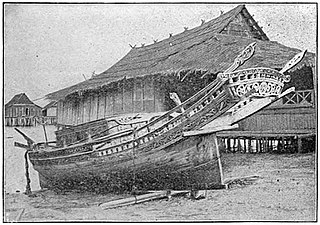
Lepa, also known as lipa or lepa-lepa, are indigenous ships of the Sama-Bajau people in the Philippines and Malaysia. They were traditionally used as houseboats by the seagoing Sama Dilaut. Since most Sama have abandoned exclusive sea-living, modern lepa are instead used as fishing boats and cargo vessels.

Buggoh is a type of small dugout canoe of the Sama-Bajau people of the Philippines. They are made from a single log hollowed into a canoe with a rounded bottom. It is equal-ended, with the prow and the stern dropping straight down or sloping outward. They are sometimes equipped with two outrigger floats. They are usually around 1.5 to 4.5 m long. It is also known by various other names, including boggo', buggoh jungalan, buggoh-buggoh, or beggong.

Bangka are various native watercraft of the Philippines. It originally referred to small double-outrigger dugout canoes used in rivers and shallow coastal waters, but since the 18th century, it has expanded to include larger lashed-lug ships, with or without outriggers. Though the term used is the same throughout the Philippines, "bangka" can refer to a very diverse range of boats specific to different regions. Bangka was also spelled as banca, panca, or panga in Spanish. It is also known archaically as sakayan.

The Fontana della Navicella is a fountain built around a marble and travertine replica of an Ancient Roman sculpture, depicting a decorated Roman Galley, and erected in front of the church of Santa Maria in Domnica of Rome, Italy. While the statue is a copy (1518-1519) made by Andrea Sansovino on commission from Pope Leo X based on fragments discovered near the church.

Owong, also spelled owung, are traditional small dugout canoes of the T'boli people in the Philippines. It is traditionally made from the hollowed out trunks of lawaan (Shorea spp.). It is propelled by paddling and can carry around three people. It is used by the T'boli people for fishing and transport in Lake Sebu, Lake Lahit, and Lake S'loton in their ancestral territory in southwestern Mindanao.

Tataya are traditional small fishing boats, with or without outriggers of the Ivatan people in the Philippines. They are generally round-hulled and powered by rowers or sails made from woven pandanus leaves. They have several variants based on size and island of origin. The term tataya can also be used for all traditional boats in the Batanes Islands in general, similar to the term bangka in the rest of the Philippines.
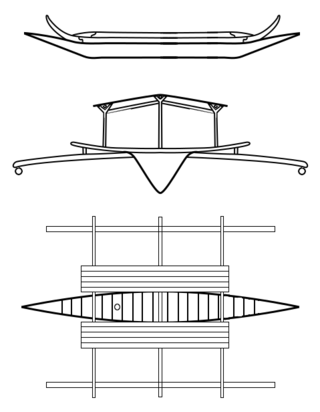
Djenging is a type of large double-outrigger plank boat built by the Sama-Bajau people of the Philippines. It is typically used as a houseboat, though it can be converted to a sailing ship. It was the original type of houseboat used by the Sama-Bajau before it was largely replaced by the lepa after World War II. Larger versions of djenging were also known as balutu or kubu, often elaborately carved with bifurcated extensions on the prow and stern.

Lashed-lug boats are ancient boat-building techniques of the Austronesian peoples. It is characterized by the use of sewn holes and later dowels ("treenails") to stitch planks edge-to-edge onto a dugout keel and solid carved wood pieces that form the caps for the prow and stern. The planks are further lashed together and to ribs with fiber ropes wrapped around protruding carved lugs on the inside surfaces. Unlike carvel construction, the shell of the boat is created first, prior to being fastened to the ribs. The seams between planks are also sealed with absorbent tapa bark and fiber that expands when wet or caulked with resin-based preparations.

A solu is a traditional boat of the Toba Batak people of North Sumatra, Indonesia. The solu is a dugout canoe, with boards added on the side bound with iron tacks. They are of various size, the largest, for 50 rowers, are about 18 meters in length; there is a slight keel carved fore and aft. They are propelled by sitting rowers, who sit in pairs on cross seats. The paddles used have an oval blade and cross handle. The boat can be distinguished by its ornaments: The stern ornament is called giarogia di pudi, which consists of three sticks with tufts of horsehair and a row of shorter sticks called rame rame with a bigger one in the middle distinctly phalloid, strung across; no tradition appears to explain this singular ornament. The ornament on the prow is a carved and painted figure symbolising a buffalo head, with another rame rame strung in front with its singular central phallus. A sort of bowsprit with tufts of horsehair at the sides and one of human hair at the end, over it rises an upright carved post, called the torgiok.
References
- ↑ Madale, Abdullah T. (1997). The Maranaws, Dwellers of the Lake. Rex Bookstore, Inc. p. 82. ISBN 9789712321740.
- ↑ Severino, Howie (24 May 2018). "Amid the ruins, a view of Marawi's rich environment". GMA News Online. Retrieved 21 November 2019.
- ↑ "Awang". Museyo Kutawato. Retrieved 12 February 2020.





